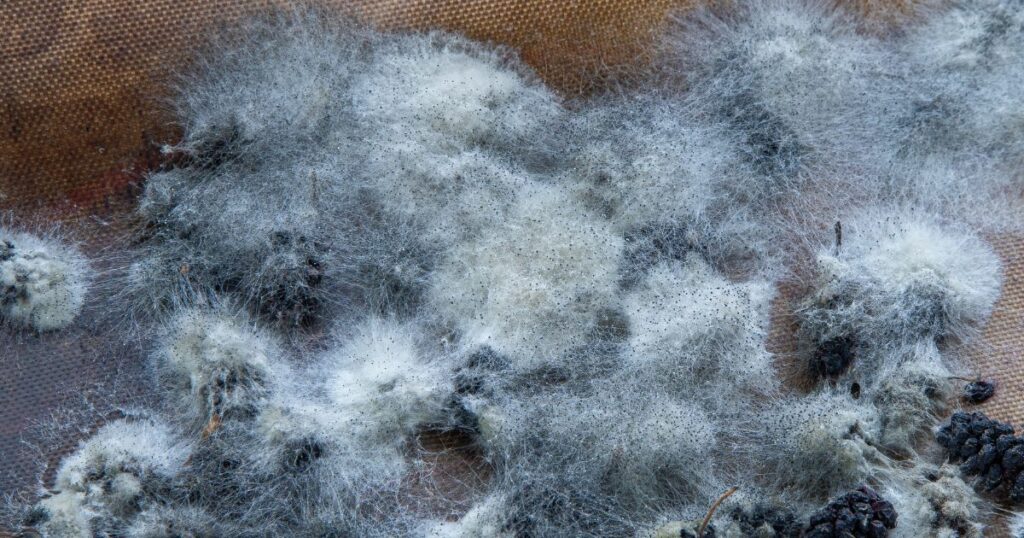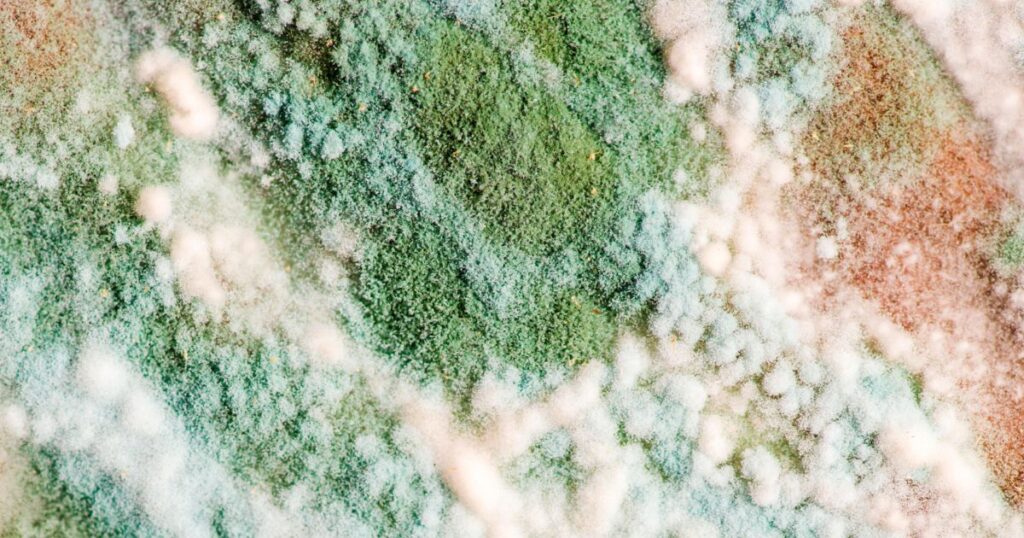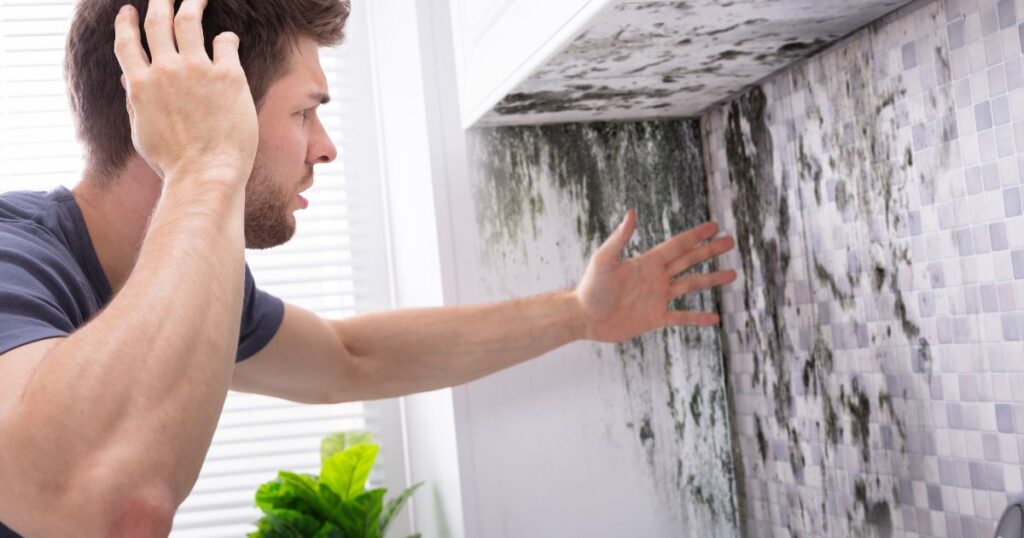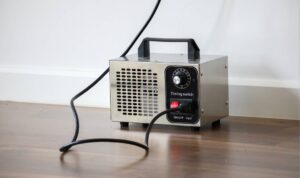Mold is a common and persistent issue in many households and buildings, often manifesting in different colors. These mold colors not only affect the aesthetics but can also indicate variations in mold species, potential health risks, and preferred environments. In this comprehensive guide, we will explore the distinct characteristics and implications of white mold, black mold, and green mold, providing you with a thorough understanding of these common fungi.
White Mold: The Less Discussed Intruder
Color and Texture: White mold typically appears in shades of white or light gray and often has a cotton-like or powdery texture. Its understated appearance can make it less notorious than its darker counterparts.
Preferred Environments: Much like other molds, white mold thrives in damp, cool, and poorly ventilated areas. It commonly appears on organic materials like wood, drywall, and paper.
Health Implications: While white mold is generally considered less harmful than black mold, it should not be disregarded. Exposure to white mold can lead to respiratory issues, allergies, and can exacerbate pre-existing health conditions. Prompt addressing of white mold is advisable to prevent potential health risks.

How to Remove White Mold
White mold is a common household issue that, when identified, should be promptly addressed. To safely and effectively remove white mold, follow these steps:
- Safety Precautions:
- Before starting the removal process, ensure you have adequate ventilation in the area.
- Wear protective gear, including an N95 respirator mask, gloves, and safety goggles to minimize exposure.
- Isolate the Area:
- Close off the affected area to prevent mold spores from spreading to other parts of your home.
- Moisture Control:
- Identify and rectify the source of moisture that led to mold growth. This could be a leak or high humidity. Without addressing the moisture issue, mold is likely to return.
- Scrubbing:
- Mix a solution of water and mild detergent.
- Use a scrub brush or sponge to clean the moldy surface. Scrub gently but effectively, removing as much mold as possible.
- Disposal:
- Dispose of all cleaning materials, including brushes and sponges, that came into contact with the mold. Seal them in plastic bags for disposal.
- Antifungal Solution:
- Apply a commercial mold-removal product or a mixture of one part bleach to ten parts water to the affected area. Allow it to sit for 15 minutes.
- Rinse and Dry:
- Rinse the area with clean water, then dry it thoroughly. Dehumidifiers and fans can expedite the drying process.
- Preventative Measures:
- To prevent future mold growth, keep the area well-ventilated and address any ongoing moisture issues.
Black Mold: The Infamous Menace

Color and Texture: Black mold, scientifically known as Stachybotrys chartarum, typically appears greenish-black, but it can also take on gray or dark green hues. It often exhibits a slimy or fuzzy texture.
Preferred Environments: Black mold thrives in areas with persistent moisture, such as in water-damaged buildings, leaky pipes, and environments with high humidity.
Health Implications: Black mold is notorious for producing mycotoxins that can be harmful when inhaled or touched. Prolonged exposure to these mycotoxins can lead to respiratory issues, skin irritation, eye irritation, and more severe health problems in individuals with respiratory conditions, compromised immune systems, or allergies.
How to Remove Black Mold
Black mold is particularly concerning due to its potential health risks. To safely remove black mold, follow these guidelines:
- Safety Precautions:
- Wear a high-quality N95 respirator mask, gloves, safety goggles, and protective clothing.
- Ensure proper ventilation in the area.
- Isolate the Area:
- Close off the affected area to prevent mold spores from spreading.
- Moisture Control:
- Address the source of moisture, such as fixing leaks, improving ventilation, or reducing humidity.
- HEPA Vacuum:
- Use a HEPA-filtered vacuum to remove loose mold spores.
- Scrubbing:
- Scrub the moldy surface with a mixture of water and detergent. Be thorough but gentle to avoid dispersing spores.
- Disposal:
- Seal and dispose of all materials that came into contact with the mold.
- Apply Antifungal Solution:
- Use a commercial mold-removal product or a mixture of one part bleach to ten parts water to disinfect the area. Allow it to sit for at least 15 minutes.
- Rinse and Dry:
- Rinse the area with clean water and dry it thoroughly, using dehumidifiers and fans.
- Preventative Measures:
- Address the moisture issue to prevent future mold growth. Consider using mold-resistant materials in high-risk areas.

Green Mold: A Common Culprit
Color and Texture: Green mold is not a specific type of mold but rather a general term encompassing molds that appear green in color. The texture can vary from fluffy to slimy, depending on the specific mold species.
Preferred Environments: The environmental preferences of green mold depend on the specific mold species. Some thrive in damp environments, while others prefer materials rich in cellulose, such as wood and paper.
Health Implications: The health risks associated with green mold depend on the mold species present. While some green molds may not pose significant health concerns, others can release mycotoxins similar to black mold, potentially leading to health problems upon exposure.

How to Remove Green Mold
Green mold can be a common issue, with removal procedures similar to those used for other molds:
- Safety Precautions:
- Wear protective gear, including gloves, a mask, and goggles.
- Ensure proper ventilation.
- Isolate the Area:
- Prevent mold spores from spreading to other parts of your home.
- Moisture Control:
- Identify and resolve the source of moisture contributing to mold growth.
- Scrubbing:
- Use a mixture of water and detergent to gently scrub the moldy area.
- Disposal:
- Dispose of cleaning materials and any items that came into contact with the mold.
- Antifungal Solution:
- Apply a commercial mold-removal product or a mixture of one part bleach to ten parts water. Allow it to sit for 15 minutes.
- Rinse and Dry:
- Rinse the area with clean water and dry it thoroughly.
- Preventative Measures:
- To prevent further mold growth, address the moisture issue and keep the area well-ventilated.
Remember that, regardless of the mold type, if the infestation is extensive or if you have health concerns, it’s best to consult with a professional mold remediation service to ensure safe and effective removal.

Conclusion: Knowledge is Key
In conclusion, the color of mold serves as an initial visual indicator of the type of mold present, but it is not the sole determining factor for assessing its risks or implications. Any mold infestation should be taken seriously and addressed promptly to prevent property damage and health issues.
Proper identification and safe removal of mold should be carried out by professionals (Read more: mold remediation Seattle). Additionally, maintaining proper ventilation, moisture control, and regular home inspections can help prevent mold infestations, regardless of their color. By understanding the nuances of white mold, black mold, and green mold, you are better equipped to protect your property and health in the face of these common household challenges.



